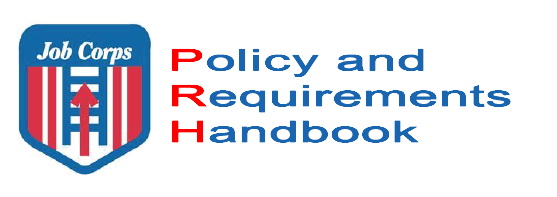R1. Food Handling
Centers must ensure that food handling practices comply with the state, local, or U.S. Public Health Service Food Code, whichever is more stringent. Centers must develop and implement a Hazard Analysis and Critical Control Point (HACCP) program as outlined in Annex 4 of the U.S. Public Health Service Food Code. All meat products must meet U.S. Department of Agriculture standards. The centers must ensure:
a. Food Service Manager has completed food safety training.
b. Food Service staff are trained in safe handling of time/temperature control for safety (TCS) food including safe cooking and holding temperatures.
c. Temperature monitoring logs are maintained for refrigerators, freezers, and food held for service and during service.
R2. Food Storage
Centers must ensure that storage of food complies with the state, local, or U.S. Public Health Service Food Code, whichever is more stringent, and does the following:
a. Storage areas protect food from the elements, fire, rodents, insects, organisms, and other causes of spoilage.
b. Chemicals, soaps, and poisons are properly labeled and stored separately from food.
c. Storerooms are well ventilated and food items are stored a minimum of six inches above the floor in a manner that protects the food from splash, dust, and other contamination and permits easy cleaning of the area. Exceptions are:
1. Metal pressurized beverage containers and cased food packaged in cans, glass, or other waterproof containers, and milk containers in plastic crates
2. Containers stored on dollies, racks, or pallets, provided such equipment is easily mobile
d. Storerooms are free of exposed or unprotected sewer lines, water lines (except automatic fire protection sprinkler heads), uninsulated steam lines, water heaters, refrigeration condensing units, or other heat-producing devices.
e. All refrigeration equipment (refrigerators and freezers) must be monitored to ensure proper temperature ranges are maintained at all times.
f. Open food containers, cooked and fresh, are covered, labeled, and dated to ensure proper usage.
R3. Food and Nutrition
Centers must provide food services to students, to include:
a. Meal service
1. Provide three meals per day, except on holidays and weekends, when two meals are acceptable. In lieu of the third meal, healthy snacks must be available to students on weekends and holidays.
2. No more than 14 hours shall elapse between meal services.
3. Meals must be planned using a minimum of a 28-day cycle cafeteria menu.
4. Meal service must be consistent with schedules for work-based learning, off-center activities, late arrivals, etc.
b. Food options
1. Students must receive a minimum of two choices of meat or non-meat protein sources at both lunch and supper.
2. Students must receive a minimum of the following daily:
(a) Five choices of fresh or frozen vegetables and/or fruits
(b) Four servings of grain products
(c) Low-fat and/or fat-free milk and dairy alternatives and water must be available at all meals
3. Centers must offer meals and food items that meet the dietary needs and desires of a diverse population, including ethnic, vegetarian, and low-fat alternatives.
c. Nutrition
1. Meals must reflect the definition of a “Healthy Diet” as described in The Dietary Guidelines for Americans. Meals must:
(a) Emphasize fruits, vegetables, whole grains, fat-free or low-fat milk and milk products, and dairy alternatives.
(b) Include lean meats, poultry, fish, beans, eggs, and nuts.
(c) Be low in saturated fats, trans fats, cholesterol, salt (sodium), and added sugars.
2. Portion sizes must reflect recommendations set forth in The Dietary Guidelines for Americans.
3. Foods of Minimal Nutritional Value (FMNV) may be available to students in the cafeteria on a limited basis. FMNV include soda water/fountain drinks, water ices, hard candies, jellies and gums, marshmallow candies, licorice, spun candies, and candy coated popcorn. Students may be given the option to purchase FMNV through vending machines or the student store.
R4. Dining Environment
Centers must:
a. Operate a dining room and serving and meal preparation areas that are clean, attractive, and comply with state/local (whichever is stricter) food handling and sanitation standards for the food service industry.
b. Post the most recent environmental health inspection report at the serving line entrance.
R5. Food Service Staff Health
Centers must ensure that kitchen and dining hall staff comply with state or local food handling requirements, per Chapter 5, Section 5.10, R1.
R6. Food Service Management and Control
Centers must develop procedures for ordering, purchasing, receiving, storing, inventorying, and issuing food products that ensure:
a. Prevention of fraud and abuse
b. Protection of food and food preparation equipment and areas from contaminants, insects, and rodents
c. Safe and sanitary handling and storage of food
R7. Student Input
Centers must develop procedures to obtain student input into the planning and evaluation of the content and quality of the meals and service provided.
R8. Staff/Visitor Meals
Centers must provide staff and visitors access to meal service during regularly scheduled serving periods. All non-students must be charged (unless prior Regional Office approval is granted) a price, which covers cost of food and its preparation.

